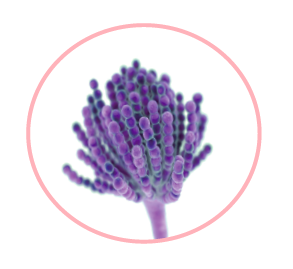Rice by-products: their use in the feeding of weaning piglets
Pig feed accounts for approximately 60% of production costs. Therefore, some studies have been carried out with new ingredients to determine their nutritional value, biological response and the economic viability of their inclusion in diets.
Agribusiness co-products have potential for use in animal feed.

The use
of rice by-products deserves attention as it is a staple cereal for human consumption which is grown in most tropical and semi-tropical regions.
Of the total rice production, about 70% is used for human consumption while waste from the milling industry, including rice husks, rice bran, and broken rice, can be used in animal feed.
Broken
rice (BR) is obtained during the sieving process. It consists of broken and malformed grains which correspond to 14% of the total grain. Broken rice has been used as a great alternative to corn in animal feed due to its similar metabolizable energy and crude protein values.(
Nepomuceno et al, 2011;
Che et al., 2012).
However, BR has a
lower fat content and a higher starch percentage than corn (
Rostagno et al., 2017) and contains a
very low concentration of fiber (
Che et al. , 2012).

Some advantages of replacing corn with rice co-products relate to
the low levels of mycotoxins in the grain. Due to the fact that corn tends to be affected with high contamination, predominantly with aflatoxins.
Rice and corn co-products have shown similar effects on animal yield, but rice may induce
prebiotic effects and
increase serum IgA concentrations, indicating a better immune response (
Henderson et al., 2012).

[register]Plasma TNF-α concentrations observed in pig-fed diets with increasing concentrations of rice bran indicate a potential power to
reduce inflammatory responses in the gut (
Casas and Stein, 2016).
The inclusion of 10% rice bran
improved feed efficiency and increased the concentration of colonic bifidobacteria in weaned piglets, indicating that this by-product may also have prebiotic properties (
Herfel et al., 2013).

 The use of rice by-products deserves attention as it is a staple cereal for human consumption which is grown in most tropical and semi-tropical regions.
Of the total rice production, about 70% is used for human consumption while waste from the milling industry, including rice husks, rice bran, and broken rice, can be used in animal feed.
Broken rice (BR) is obtained during the sieving process. It consists of broken and malformed grains which correspond to 14% of the total grain. Broken rice has been used as a great alternative to corn in animal feed due to its similar metabolizable energy and crude protein values.(Nepomuceno et al, 2011; Che et al., 2012).
However, BR has a lower fat content and a higher starch percentage than corn (Rostagno et al., 2017) and contains a very low concentration of fiber (Che et al. , 2012).
The use of rice by-products deserves attention as it is a staple cereal for human consumption which is grown in most tropical and semi-tropical regions.
Of the total rice production, about 70% is used for human consumption while waste from the milling industry, including rice husks, rice bran, and broken rice, can be used in animal feed.
Broken rice (BR) is obtained during the sieving process. It consists of broken and malformed grains which correspond to 14% of the total grain. Broken rice has been used as a great alternative to corn in animal feed due to its similar metabolizable energy and crude protein values.(Nepomuceno et al, 2011; Che et al., 2012).
However, BR has a lower fat content and a higher starch percentage than corn (Rostagno et al., 2017) and contains a very low concentration of fiber (Che et al. , 2012).
 Some advantages of replacing corn with rice co-products relate to the low levels of mycotoxins in the grain. Due to the fact that corn tends to be affected with high contamination, predominantly with aflatoxins.
Rice and corn co-products have shown similar effects on animal yield, but rice may induce prebiotic effects and increase serum IgA concentrations, indicating a better immune response (Henderson et al., 2012).
Some advantages of replacing corn with rice co-products relate to the low levels of mycotoxins in the grain. Due to the fact that corn tends to be affected with high contamination, predominantly with aflatoxins.
Rice and corn co-products have shown similar effects on animal yield, but rice may induce prebiotic effects and increase serum IgA concentrations, indicating a better immune response (Henderson et al., 2012).
 [register]Plasma TNF-α concentrations observed in pig-fed diets with increasing concentrations of rice bran indicate a potential power to reduce inflammatory responses in the gut (Casas and Stein, 2016).
The inclusion of 10% rice bran improved feed efficiency and increased the concentration of colonic bifidobacteria in weaned piglets, indicating that this by-product may also have prebiotic properties (Herfel et al., 2013).
[register]Plasma TNF-α concentrations observed in pig-fed diets with increasing concentrations of rice bran indicate a potential power to reduce inflammatory responses in the gut (Casas and Stein, 2016).
The inclusion of 10% rice bran improved feed efficiency and increased the concentration of colonic bifidobacteria in weaned piglets, indicating that this by-product may also have prebiotic properties (Herfel et al., 2013).